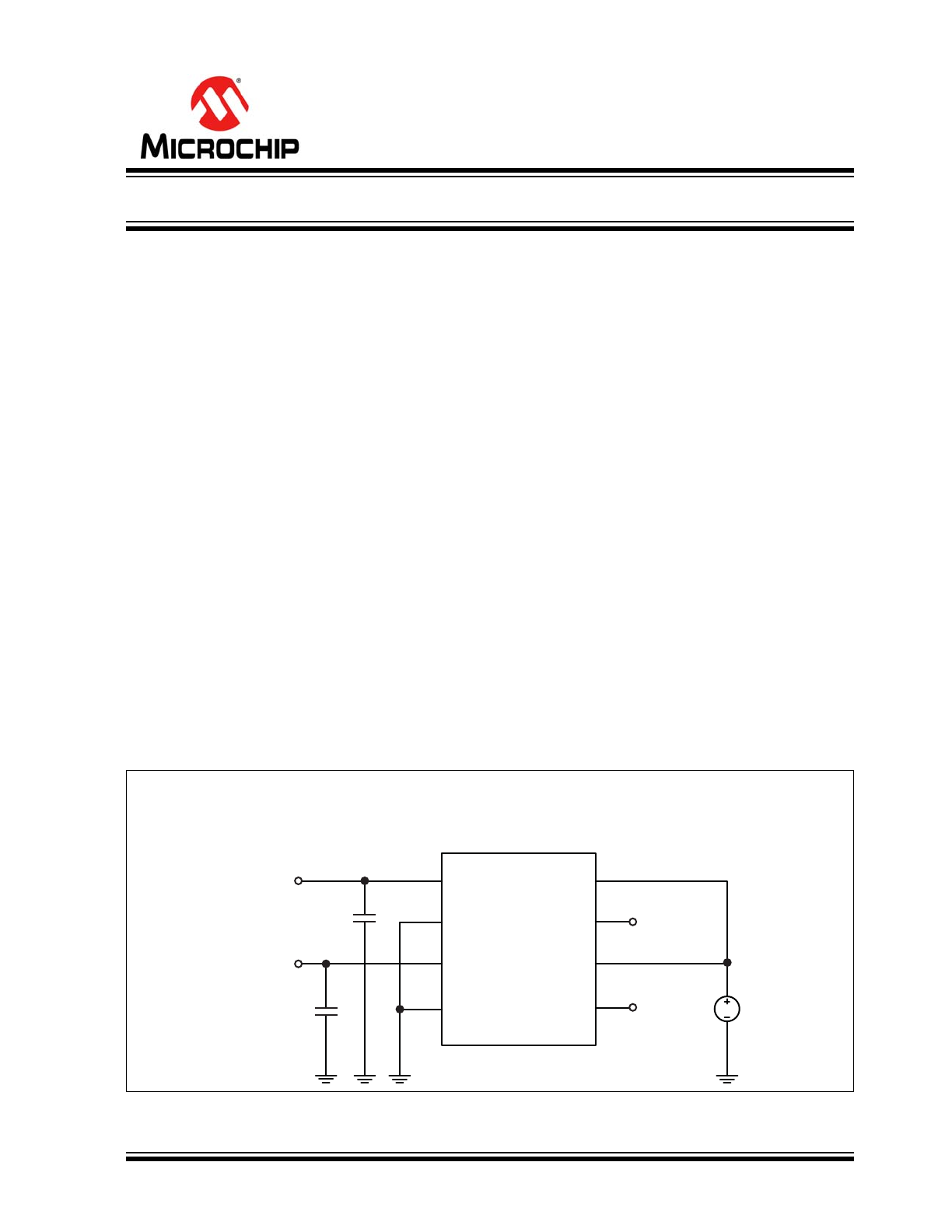
2016 Microchip Technology Inc.
DS20005614A-page 1
MIC5202
Features
• High Output Voltage Accuracy
• Variety of Output Voltages
• Up to 100 mA of Continuous Output Current
• Low Ground Current
• Low Dropout Voltage
• Excellent Line and Load Regulations
• Extremely Low Temperature Coefficient
• Current and Thermal Limit Protections
• Reverse-Battery Protection
• Zero-Off Mode Current
• Logic-Controlled Electronic Shutdown
• 8-Pin SOIC Package
Applications
• Cell Phones
• Laptop, Notebook, and Palmtop Computers
• Battery-Powered Equipment
• PCMCIA V
CC
and V
PP
Regulation/Switching
• Barcode Scanners
• SMPS Post-Regulator/DC-to-DC Modules
• High-Efficiency Linear Power Supplies
General Description
The MIC5202 is a dual linear voltage regulator with low
dropout voltage (typically 17 mV at light loads and
210 mV at 100 mA), and low ground current (1 mA at
100 mA per output). Ideal for battery-operated
applications, the MIC5202 offers 1% output voltage
accuracy and dual enable pins. The enable pins may
be driven individually or tied directly to V
IN
. When the
part is disabled, power consumption drops to nearly
zero. The MIC5202 ground current increases slightly in
dropout, which minimizes power consumption and
increases battery life. Some key features include
reversed battery protection, current-limit, and
overtemperature protection.
The MIC5202 is available in fixed output voltages in the
small 8-pin SOIC package.
Typical Application Schematic
MIC5202
8-P
IN
SOIC
VOUT1
VOUT2
U1
MIC5202
VOUT1
GND1
GND2
VOUT2
VIN1
VIN2
EN1
EN2
EN1
EN2
Dual 100 mA Low-Dropout Regulator

MIC5202
DS20005614A-page 2
2016 Microchip Technology Inc.
1.0
ELECTRICAL CHARACTERISTICS
Absolute Maximum Ratings †
Input Supply Voltage (V
IN1
, V
IN2
) ................................................................................................................ –20V to +60V
Enable Input Voltage (EN1, EN2)................................................................................................................ –20V to +60V
ESD Rating (
Note 1
)................................................................................................................................... ESD Sensitive
Operating Ratings ‡
Input Supply Voltage (V
IN1
, V
IN2
) ............................................................................................................... +2.5V to +26V
Enable Input Voltage (EN1, EN2)....................................................................................................................... 0V to V
IN
† Notice: Stresses above those listed under “Absolute Maximum Ratings” may cause permanent damage to the device.
This is a stress rating only and functional operation of the device at those or any other conditions above those indicated
in the operational sections of this specification is not intended. Exposure to maximum rating conditions for extended
periods may affect device reliability.
‡ Notice: The device is not guaranteed to function outside its operating ratings.
Note 1: Devices are ESD sensitive. Handling precautions recommended. Human body model, 1.5 kΩ in series with
100 pF.
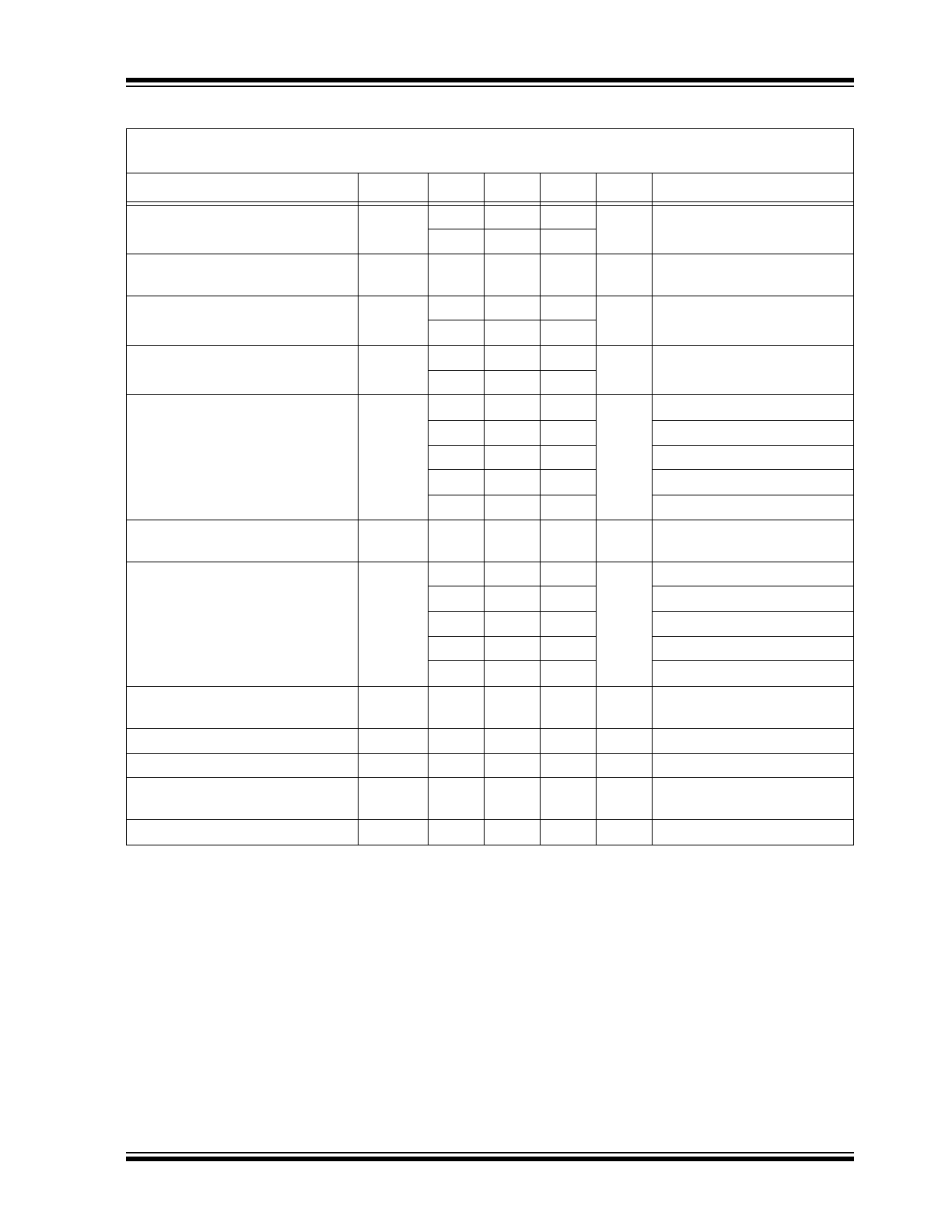
2016 Microchip Technology Inc.
DS20005614A-page 3
MIC5202
TABLE 1-1:
ELECTRICAL CHARACTERISTICS
Electrical Characteristics: V
IN
= V
OUT
+ 1V, C
OUT
= 10 µF; I
OUT
= 1 mA; T
J
= 25°C, bold values indicate –40°C ≤
T
J
≤ +125°C; unless noted. Specifications are for one LDO. (
Note 1
).
Parameters
Sym.
Min.
Typ.
Max.
Units
Conditions
Output Voltage Accuracy
V
OUT
–1
—
1
%
—
–2
—
2
Output Voltage Temperature
Coefficient (
Note 2
)
∆V
OUT
/∆T
—
40
150
ppm/°C
—
Line Regulation
∆V
OUT
/
V
OUT
—
0.004
0.10
%
V
IN
= V
OUT
+ 1V to 26V
—
—
0.40
Load Regulation (
Note 3
)
∆V
OUT
/
V
OUT
—
0.04
0.16
%
I
OUT
= 0.1 mA to 100 mA
—
—
0.30
Dropout Voltage (
Note 4
)
V
IN
–
V
OUT
—
17
—
mV
I
OUT
= 100 µA
—
130
—
I
OUT
= 20 mA
—
150
—
I
OUT
= 30 mA
—
180
—
I
OUT
= 50 mA
—
225
350
I
OUT
= 100 mA
Ground Pin Current Shutdown
I
SHUT-
DOWN
—
0.01
—
µA
V
EN
≤ 0.7V (shutdown)
Ground Pin Current (
Note 5
)
I
GND
—
170
—
µA
V
EN
≥ 2.0V, I
OUT
= 100 µA
—
270
—
I
OUT
= 20 mA
—
330
—
I
OUT
= 30 mA
—
500
—
I
OUT
= 50 mA
—
1200
1500
I
OUT
= 100 mA
Ground Pin Current in Dropout
I
GNDDO
—
270
330
µA
V
IN
= 0.5V less than V
OUT
,
I
OUT
= 100 µA
Power Supply Rejection Ratio
PSRR
—
75
—
dB
—
Short Circuit Current Limit
I
LIMIT
—
280
—
mA
V
OUT
= 0V
Thermal Regulation (
Note 6
)
∆V
OUT
/
∆P
D
—
0.05
—
%/W
—
Output Noise
e
n
—
100
—
µV
—
Note 1: Specification for packaged product only.
2: Output voltage temperature coefficient is defined as the worst case voltage change divided by the tem-
perature range.
3: Load regulation is measured at a constant junction temperature using low duty cycle pulse testing. Parts
are tested for load regulation in the load range from 0.1 mA to 100 mA. Changes in output voltage caused
by heating effects are covered by the thermal regulation specification.
4: Dropout voltage is defined as the input to output differential at which the output voltage drops 2% below its
nominal value measured at 1V differential.
5: Ground pin current is the regulator quiescent current plus pass transistor base current. The total current
drawn from the supply is the sum of the load current plus the ground pin current.
6: Thermal regulation is defined as the change in output voltage at a time “t” after a change in power dissipa-
tion is applied, excluding load or line regulation effects. Specifications are for a 100 mA load pulse at
V
IN
= 26V for t = 10 ms.
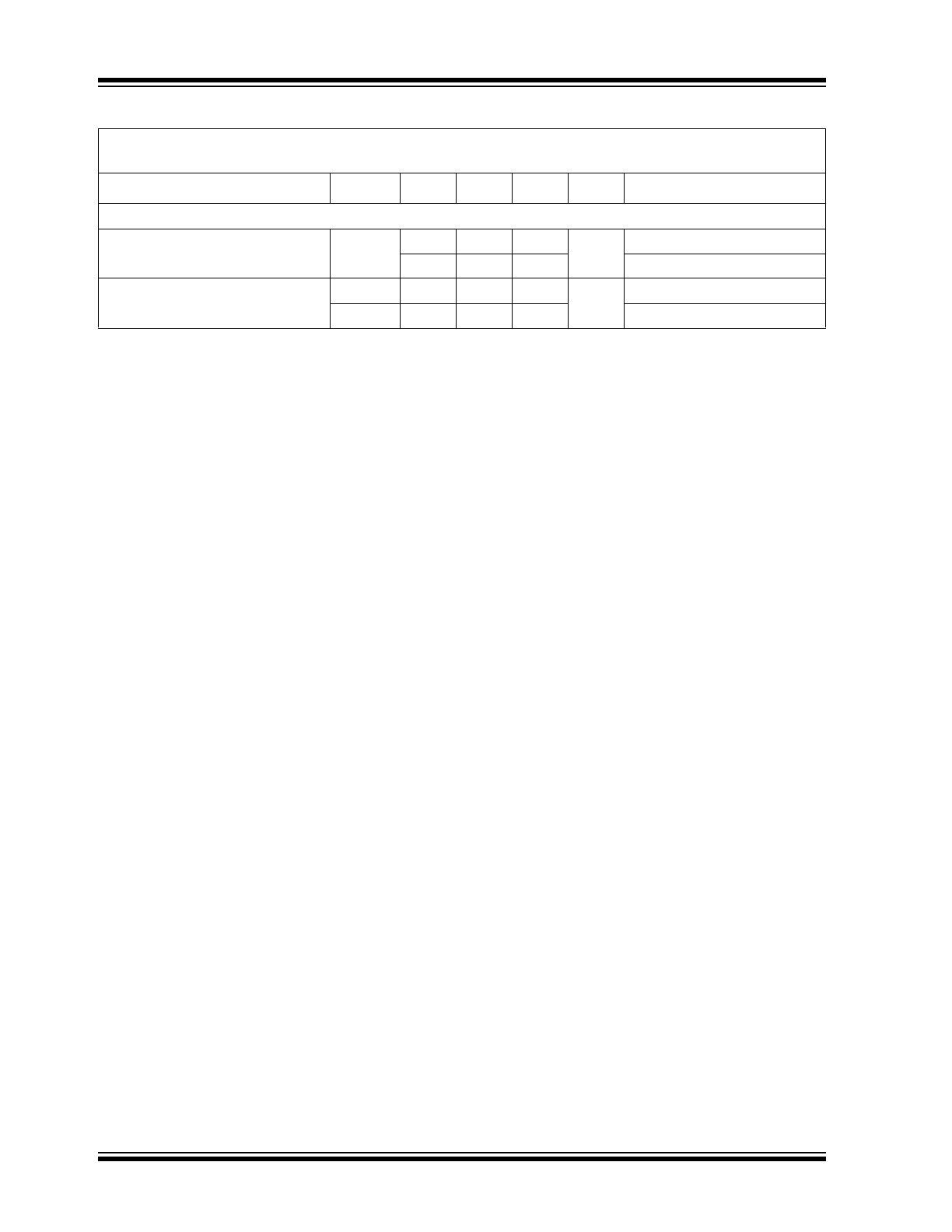
MIC5202
DS20005614A-page 4
2016 Microchip Technology Inc.
Enable Input
Enable Input Voltage
V
EN
—
—
0.7
V
Logic-Low = Off
2.0
—
—
Logic-High = On
Enable Input Current
I
ENL
—
0.01
—
µA
V
EN
≤ 0.7V
I
ENH
—
8
50
V
EN
≥ 2.0V
TABLE 1-1:
ELECTRICAL CHARACTERISTICS (CONTINUED)
Electrical Characteristics: V
IN
= V
OUT
+ 1V, C
OUT
= 10 µF; I
OUT
= 1 mA; T
J
= 25°C, bold values indicate –40°C ≤
T
J
≤ +125°C; unless noted. Specifications are for one LDO. (
Note 1
).
Parameters
Sym.
Min.
Typ.
Max.
Units
Conditions
Note 1: Specification for packaged product only.
2: Output voltage temperature coefficient is defined as the worst case voltage change divided by the tem-
perature range.
3: Load regulation is measured at a constant junction temperature using low duty cycle pulse testing. Parts
are tested for load regulation in the load range from 0.1 mA to 100 mA. Changes in output voltage caused
by heating effects are covered by the thermal regulation specification.
4: Dropout voltage is defined as the input to output differential at which the output voltage drops 2% below its
nominal value measured at 1V differential.
5: Ground pin current is the regulator quiescent current plus pass transistor base current. The total current
drawn from the supply is the sum of the load current plus the ground pin current.
6: Thermal regulation is defined as the change in output voltage at a time “t” after a change in power dissipa-
tion is applied, excluding load or line regulation effects. Specifications are for a 100 mA load pulse at
V
IN
= 26V for t = 10 ms.

2016 Microchip Technology Inc.
DS20005614A-page 5
MIC5202
TEMPERATURE SPECIFICATIONS
Parameters
Sym.
Min.
Typ.
Max.
Units
Conditions
Temperature Ranges
Junction Operating Temperature
Range
T
J
–40
—
+125
°C
Note 1
Storage Temperature
T
S
–65
—
+150
°C
—
Lead Temperature
—
—
—
+260
°C
Soldering, 10s
Package Thermal Resistances
Thermal Resistance, SOIC 8-Ld
JA
—
63
—
°C/W
—
Note 1: The maximum allowable power dissipation is a function of ambient temperature, the maximum allowable
junction temperature and the thermal resistance from junction to air (i.e., T
A
, T
J
,
JA
). Exceeding the
maximum allowable power dissipation will cause the device operating junction temperature to exceed the
maximum +125°C rating. Sustained junction temperatures above +125°C can impact the device reliability.

MIC5202
DS20005614A-page 6
2016 Microchip Technology Inc.
2.0
TYPICAL PERFORMANCE CURVES
FIGURE 2-1:
Dropout Voltage vs. Output
Current.
FIGURE 2-2:
Dropout Voltage vs.
Temperature.
FIGURE 2-3:
Dropout Characteristics.
FIGURE 2-4:
Ground Current vs. Output
Current.
FIGURE 2-5:
Ground Current vs. Input
Voltage.
FIGURE 2-6:
Output Voltage vs. Output
Current.
Note:
The graphs and tables provided following this note are a statistical summary based on a limited number of
samples and are provided for informational purposes only. The performance characteristics listed herein
are not tested or guaranteed. In some graphs or tables, the data presented may be outside the specified
operating range (e.g., outside specified power supply range) and therefore outside the warranted range.
DROPOUT VOL
T
AGE (mV)
OUTPUT CURRENT (mA)
250
200
150
100
50
0
0.01
0.1
1
10
100
1000
DROPOUT VOL
T
AGE (V)
TEMPERATURE (ºC)
0.4
0.3
0.2
0.1
0
-60
-30
30
60
90
150
0
120
I
OUT
= 100mA
I
OUT
= 1mA
OUTPUT VOL
T
AGE (V)
INPUT VOLTAGE (V)
3.5
3.0
2.0
1.0
0.0
0
2
4
6
10
8
I
OUT
= 100mA
I
OUT
= 100μA, 1mA
0.5
1.5
2.5
GROUND CURRENT (mA)
OUTPUT CURRENT (mA)
10
1
0.1
0.01
0.1
1
10
100
GROUND CURRENT (mA)
INPUT VOLTAGE (V)
1.6
1.0
0.0
0
2
4
8
10
0.2
0.4
0.6
0.8
1.2
1.4
6
I
OUT
= 1mA
I
OUT
= 100mA
OUTPUT VOL
T
AGE (V)
OUTPUT CURRENT (A)
3.5
2.0
0.0
0
0.1
0.2
0.3
0.5
1.0
1.5
2.5
3.0
C
IN
= 2.2μF
C
OUT
= 4.7μF
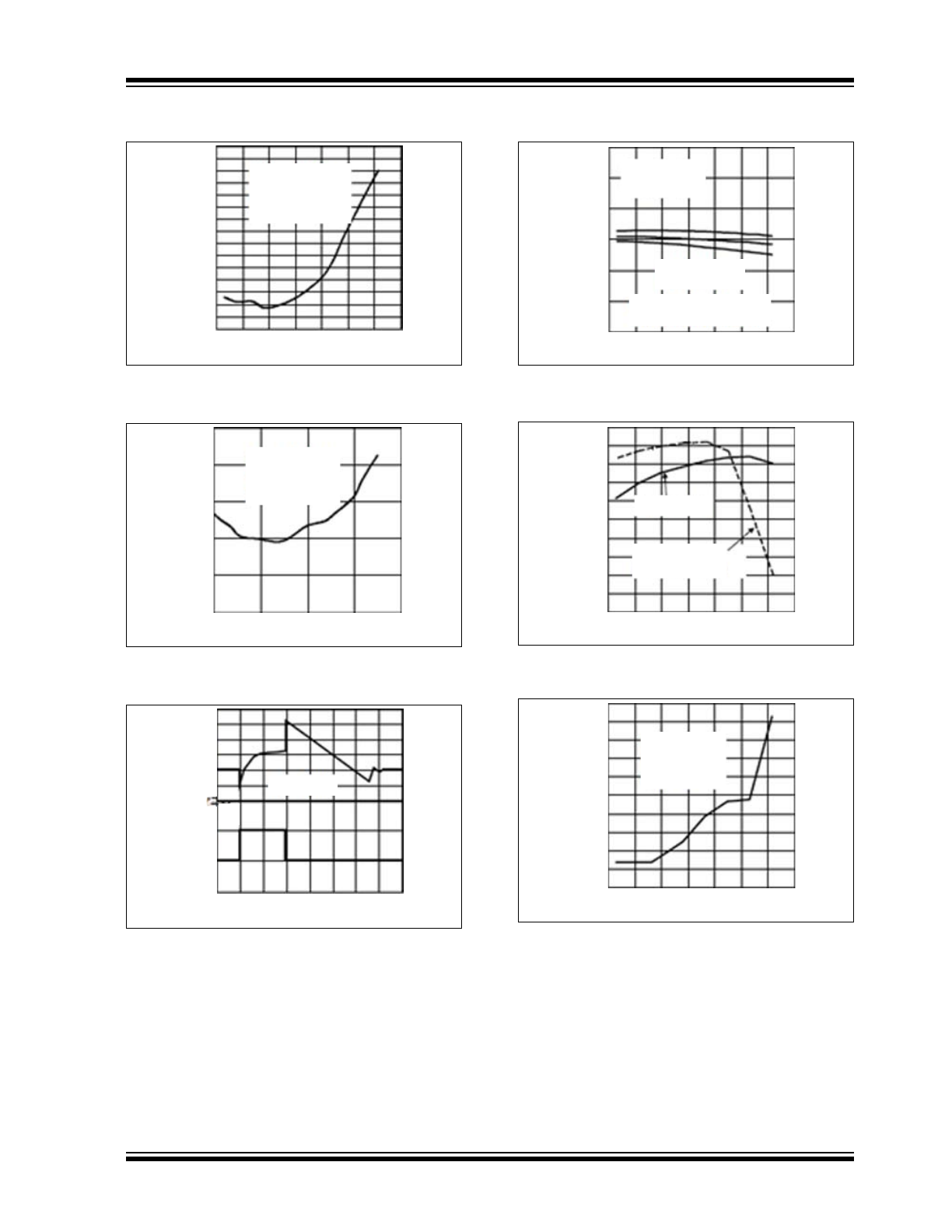
2016 Microchip Technology Inc.
DS20005614A-page 7
MIC5202
FIGURE 2-7:
Ground Current vs.
Temperature.
FIGURE 2-8:
Ground Current vs.
Temperature.
FIGURE 2-9:
Thermal Regulation (3.3V
Version).
FIGURE 2-10:
Output Voltage vs.
Temperature (3.3V Version).
FIGURE 2-11:
Output Current vs.
Temperature.
FIGURE 2-12:
Minimum Input Voltage vs.
Temperature.
GROUND CURRENT (mA)
TEMPERATURE (ºC)
0.15
-60
0
90
150
0.20
0.25
0.30
I
OUT
= 100μA
C
IN
= 2.2μF
C
OUT
= 4.7μF
-30
30
60
120
GROUND CURRENT (mA)
TEMPERATURE (ºC)
1.0
-50
0
150
1.2
1.3
1.5
I
OUT
= 100mA
C
IN
= 2.2μF
C
OUT
= 4.7μF
50
100
1.4
1.1
¨
OUTPUT (mV)
TIME (ms)
100
0
0
5
10
25
35
0
100
50
20
C
OUT
= 4.7μF
15
30
OUTPUT
CURRENT (mA)
OUTPUT VOL
T
AGE (V)
TEMPERATURE (ºC)
3.6
3.4
-60
-30
0
90
150
3.0
3.1
3.2
3.5
60
30
120
3.3
C
IN
= 2.2μF
C
OUT
= 4.7μF
3 DEVICES:
HI/AVG/LO
CURVES APPLICABLE
AT 100μA AND 100mA
OUTPUT CURRENT (mA)
TEMPERATURE (ºC)
300
240
100
120
140
160
180
260
280
V
OUT
= 3.3V
220
200
-60
-30
0
90
150
60
30
120
V
OUT
= 0V
(SHORT CIRCUIT)
MINIMUM INPUT VOL
T
AGE (V)
TEMPERATURE (ºC)
3.30
3.27
3.20
3.21
3.22
3.23
3.24
3.28
3.29
C
IN
= 2.2μF
C
OUT
= 4.7μF
I
OUT
= 1mA
3.26
3.25
-60
-30
0
90
150
60
30
120

MIC5202
DS20005614A-page 8
2016 Microchip Technology Inc.
FIGURE 2-13:
Short Circuit Current vs.
Input Voltage
.
FIGURE 2-14:
Load Transient
.
FIGURE 2-15:
Load Transient.
FIGURE 2-16:
Input Current vs. Input
Voltage (3.3V Version)
.
FIGURE 2-17:
Line Transient
.
FIGURE 2-18:
Line Transient
.
SHORT CIRCUIT CURRENT (mA)
INPUT VOLTAGE (V)
300
250
100
0
1
2
3
4
7
6
50
150
200
C
IN
= 2.2μF
C
OUT
= 4.7μF
V
OUT
= 3.3V
5
TIME (ms)
20
-20
0
2
10
0
100
10
6
C
OUT
= 4.7μF
4
8
200
0
-10
¨
OUTPUT (mV)
OUTPUT
CURRENT (mA)
TIME (ms)
20
-20
0
10
40
0
100
10
C
OUT
= 47μF
20
30
200
0
-10
¨
OUTPUT (mV)
OUTPUT
CURRENT (mA)
INPUT CURRENT (mA)
INPUT VOLTAGE (V)
120
80
0
20
40
100
60
0
1
2
8
10
4
3
9
5
6
7
R
OUT
= 33
TIME (ms)
10
-5
0
0.2
0.8
4
5
C
OUT
= 1μF
I
OUT
= 1mA
0.4
0.6
6
0
¨
OUTPUT (mV)
INPUT
VLOT
AGE (V)
TIME (ms)
15
0
0
0.2
0.6
4
10
C
OUT
= 10μF
I
OUT
= 1mA
0.4
0.5
6
5
0.1
0.3
¨
OUTPUT (mV)
INPUT
VLOT
AGE (V)
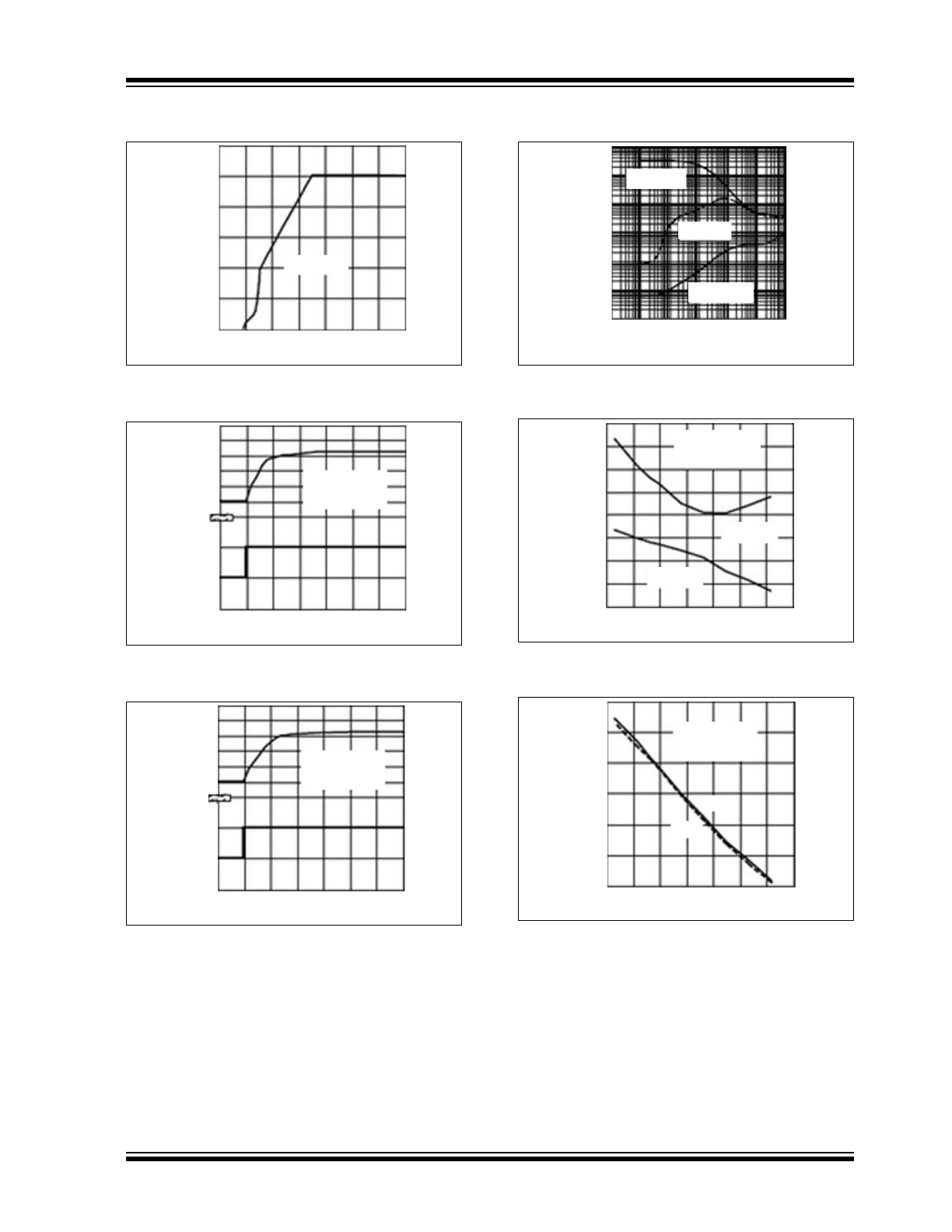
2016 Microchip Technology Inc.
DS20005614A-page 9
MIC5202
FIGURE 2-19:
Input Current vs. Input
Voltage (3.3V Version).
FIGURE 2-20:
Enable Transient (3.3V
Version).
FIGURE 2-21:
Enable Transient (3.3V
Version).
FIGURE 2-22:
Output Impedance.
FIGURE 2-23:
Enable Current Threshold
vs. Temperature.
FIGURE 2-24:
Enable Voltage Threshold
vs. Temperature.
INPUT CURRENT (mA)
INPUT VOLTAGE (V)
60
40
0
10
20
50
30
0
1
2
7
4
3
5
6
R
OUT
= 66
ENABLE (V) OUTPUT (V)
TIME (μs)
5
0
0
100
300
0
4
C
OUT
= 4.7μF
I
OUT
= 1mA
200 250
2
1
50
150
3
2
ENABLE (V) OUTPUT (V)
TIME (μs)
5
0
0
100
300
0
4
C
OUT
= 4.7μF
I
OUT
= 100mA
200 250
2
1
50
150
3
2
OUTPUT IMPEDANCE (
)
FREQUENCY (Hz)
1000
100
0.1
0.001
1×10
0
0.01
1
10
1×10
6
10×10
0
100×10
0
1×10
3
10×10
3
100×10
3
I
OUT
= 100μA
I
OUT
= 1mA
I
OUT
= 100mA
ENABLE CURRENT (μA)
TEMPERATURE (ºC)
35
30
-5
0
5
10
15
C
IN
= 2.2μF
C
OUT
= 4.7μF
25
20
-60
-30
0
90
150
60
30
120
V
EN
= 5V
V
EN
= 2V
ENABLE VOL
T
AGE (V)
TEMPERATURE (ºC)
1.6
1.4
0.4
0.6
0.8
1.0
C
IN
= 2.2μF
C
OUT
= 4.7μF
1.2
-60
-30
0
90
150
60
30
120
ON
OFF
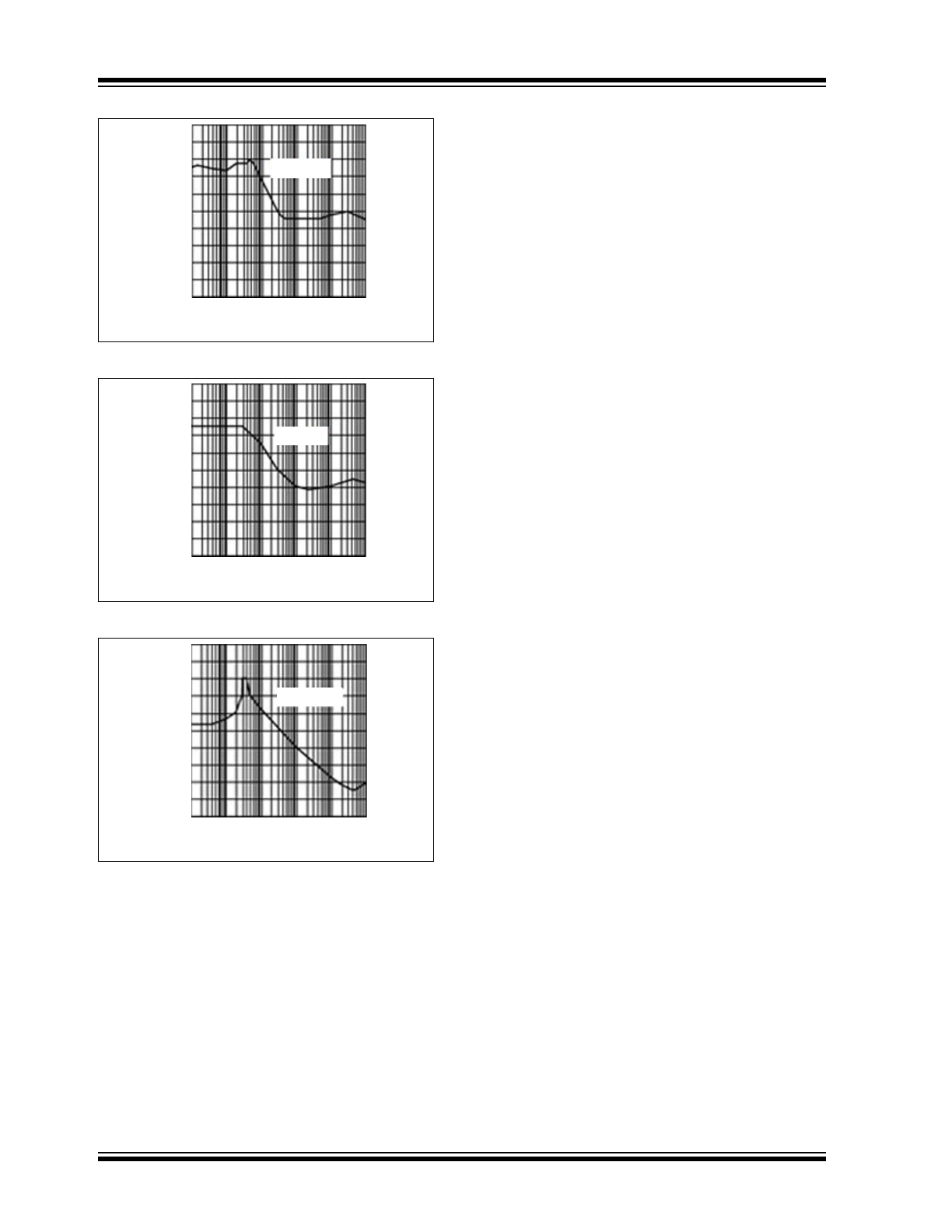
MIC5202
DS20005614A-page 10
2016 Microchip Technology Inc.
FIGURE 2-25:
Ripple vs. Frequency.
FIGURE 2-26:
Ripple vs. Frequency.
FIGURE 2-27:
Ripple vs. Frequency.
RIPPLE VOL
T
AGE (dB)
FREQUENCY (Hz)
100
80
40
0
20
60
1×10
6
10×10
0
100×10
0
1×10
3
10×10
3
100×10
3
I
OUT
= 100μA
RIPPLE VOL
T
AGE (dB)
FREQUENCY (Hz)
100
80
40
0
20
60
1×10
6
10×10
0
100×10
0
1×10
3
10×10
3
100×10
3
I
OUT
= 1mA
RIPPLE VOL
T
AGE (dB)
FREQUENCY (Hz)
100
80
40
0
20
60
1×10
6
10×10
0
100×10
0
1×10
3
10×10
3
100×10
3
I
OUT
= 100mA
